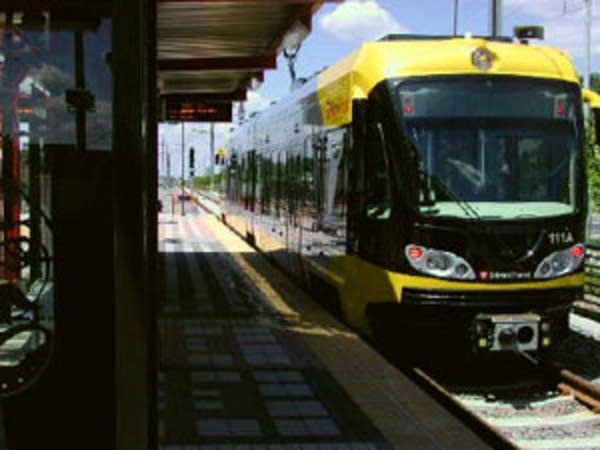Central corridor rail line moves ahead with key federal approval
Go Deeper.
Create an account or log in to save stories.
Like this?
Thanks for liking this story! We have added it to a list of your favorite stories.

The next level is a piece of transportation jargon called preliminary engineering. Metropolitan Council Chairman Peter Bell says it means the FTA permits more detailed decisions about where light rail stations will be and what they'll look like. Bell says the preliminary engineering will take up to two years.
"Then we go into what's called final design which will be about a year, then we get the full funding grant agreement which commits the federal government to paying 50 percent of the cost to build the central corridor, and that will allow us to complete it in 2014," he says.
Eight years before light rail service begins is a long time to wait. Advocates including Ramsey County Commissioner Rafael Ortega think the process can move faster.
"If we get this done in 18 months, we'll be taking a bite out of the time line for the next phase which is the final design," he says.
Turn Up Your Support
MPR News helps you turn down the noise and build shared understanding. Turn up your support for this public resource and keep trusted journalism accessible to all.
However, speeding up the process requires agreement on a lot of sticky questions. Foremost among them is the cost.
The Metropolitan Council puts the cost of the 11-mile central corridor light rail line at close to $940 million. The Met Council's Peter Bell says that's probably about a $100 million more than the FTA will approve. Planners need to begin shaving off expenses maybe even including such items as a proposed tunnel for the line below the University of Minnesota Minneapolis east bank campus.
University of Minnesota Vice President Kathleen Obrien says running a light rail on the ground through campus, instead of in a tunnel below campus poses problems.
"An at-grade alignment through campus might be slowed down by the traffic and safety issues. It might not have the optimal design of those stations and might discourage ridership," she says.
All are factors that might complicate winning the next level of federal approval for the project.
Dollars might also be saved if planners scale back the infrastructure improvements that would happen when University Avenue is dug up for running rails down the middle of the thoroughfare. St. Paul Midway community activist Brian McMahon argues cutting corners on a major public investment is not smart.
"We're looking at an infrastructure capital investment here that could last 100 years so we want to make sure we do it right the first time," he says.
The federal government carries a lot of clout in ordering how much the project should cost because half the money, as much as $400 million, would be federal money. The other half would come from state and local tax dollars.
Peter Bell says it's not an option to tell the federal government the Met Council will agree to an $800 million cost for central corridor then try find an additional $100 million in local or state money for the project.
"I can tell you now that would knock us out of securing their matching dollars," Bell says.
The reason is competition for federal transit dollars is intense. The FTA follows a rigid cost benefit formula for deciding who qualifies. If the central corridor project exceeds the prescribed cost benefit number and a project in another city has a better one the competing project gets the federal money.
The central corridor's advantage over the competition may be in Congress. U.S. Rep. Betty McCollum, whose 4th congressional district includes the central corridor, points to U.S. Rep. James Oberstar, the incoming chair of the House Transportation Committee as a key voice in transit funding decisions.
Several million dollars in county and state funds have already been spent on the central corridor light rail project. The significance of winning permission to proceed with preliminary engineering means the Met Council has permission to spend several million more it has in the bank from the state and federal government.





